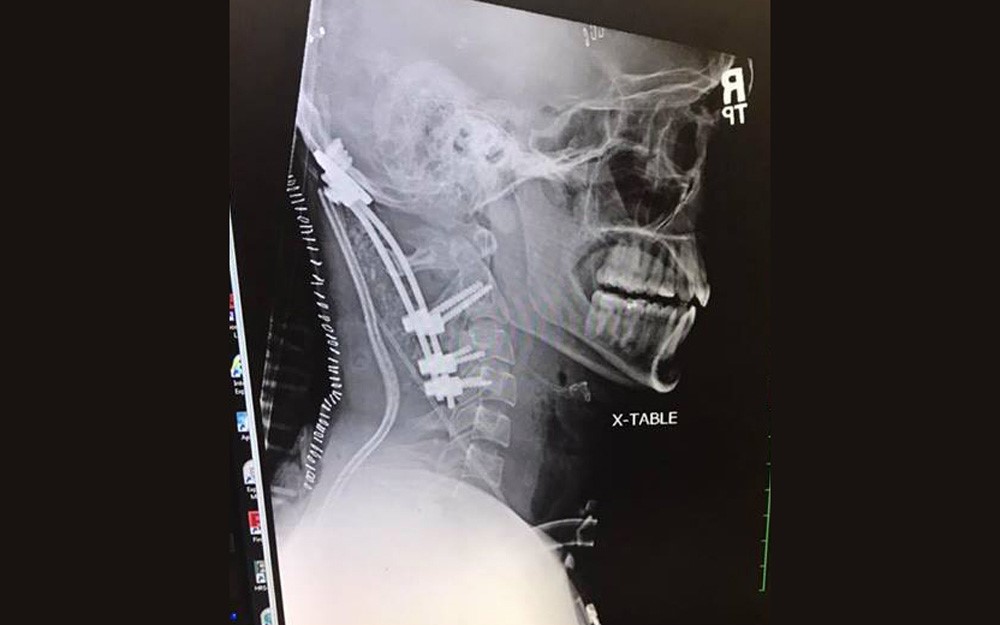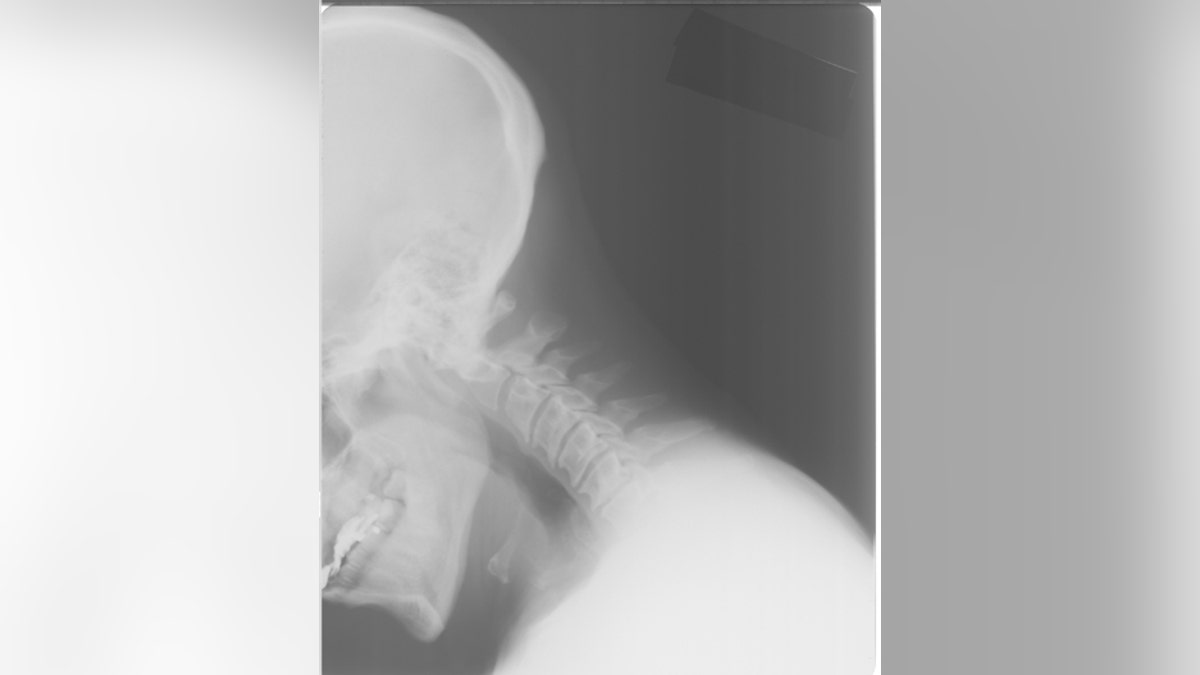Internal Decapitation: Survival & Recovery After Severe Neck Injuries
Can a person truly survive being internally decapitated, a condition where the skull separates from the spine but the head remains attached? While the very notion seems impossible, the answer, astoundingly, is sometimes yes.
The human body, in its fragility and resilience, holds secrets that continue to baffle and inspire. Among the most gruesome and harrowing injuries imaginable is the phenomenon known as internal decapitation, clinically termed occipitocervical dissociation. This devastating event occurs when the ligaments and soft tissues that anchor the skull to the spine are severed, effectively separating the head from the body's central support structure. Yet, despite the seemingly insurmountable odds, instances of survival, though rare, have been documented. The reported cases highlight the complex interplay of factors that contribute to a patient's outcome, ranging from the nature of the injury to the swiftness and efficacy of medical intervention.
Six patients with occipitocervical dissociation injuries are reported in various medical journals, their cases providing valuable insights into this rare and often fatal condition. The management strategies employed, along with the imaging findings, offer a glimpse into the challenges faced by medical professionals in these high-stakes situations. The survival of each case becomes a testament to the resilience of the human body and the advancements in medical science. Possible contributory factors for survival are carefully discussed, exploring the elements that can tip the scales in favor of life.
These injuries, characterized by upper neck and head dissociation, result from a variety of traumatic events, most commonly motor vehicle accidents, falls, and sports-related incidents. A recurring pattern emerges in the mechanisms causing the injury: a distraction-type mechanism, often involving sudden and forceful stretching of the neck. The soft tissue damage is often severe, and the diagnosis is frequently complicated by the presence of traumatic brain injury, a common companion to high-impact head and neck traumas.
The mortality rate associated with internal decapitation is tragically high, estimated to be as high as 70% of cases resulting in immediate death. The severity of the injury, coupled with the potential for damage to the brainstem and spinal cord, contributes to the grim prognosis. Furthermore, the diagnosis can be hampered by the presence of other, more immediately life-threatening injuries, such as traumatic brain injury, which can overshadow the signs of occipitocervical dissociation.
The emergency medical staff dealing with cases of internal decapitation often face immense pressure, requiring quick decision-making and resourcefulness. The need for rapid diagnosis and specialized care, including surgical intervention to stabilize the spine and realign the skull, is paramount.
While the condition is incredibly rare, its potential for survival highlights the importance of recognizing the signs and symptoms of occipitocervical dissociation. The potential for neurologic integrity, even after such a severe injury, underscores the importance of the ongoing research and innovation in the medical field.
The cases also demonstrate the critical role of advanced imaging techniques in diagnosing this complex injury. The resting osseous relationships and vertebral alignment at the time of imaging evaluation are key indicators, allowing medical professionals to assess the extent of damage and formulate an effective treatment plan.
The following table presents biographical information and details about individuals who have experienced internal decapitation and survived:
| Name | Age at Injury | Cause of Injury | Outcome | Notes |
|---|---|---|---|---|
| Megan King | 16 | Freak accident | Survived, skull reattached | Now 35 years old. |
| Christy Bullock | Unknown | Motorcycle crash | Survived | Recovering from the injury. |
| Ricky | Unknown | Unknown | Survived, skull reattached | Details given of the procedure that reattached Rickys skull to his spine; Scenes shown of ricky in the hospital and at his 8th grade graduation. |
For more detailed information, visit the Johns Hopkins Medicine website.
According to Live Science, an internal decapitation happens when the ligaments attaching a persons skull and spine become severed. With this injury, the head is still attached to the body, but it is extremely traumatic and most often fatal. The spine is severed, impeding signals sent by the brain that tell the lungs to breathe from reaching their destination. It results from traumatic hyperextension of the neck backwards.
The most common cause of an occipitocervical dissociation (AOD) is trauma. This injury can be caused by a variety of events, including high-speed motor vehicle collisions, falls from significant heights, and other incidents involving a sudden and forceful impact to the head or neck. AOD occurs when the ligaments and other soft tissues that stabilize the junction between the skull (occiput) and the first two cervical vertebrae (C1 and C2) are disrupted, leading to instability at this critical point. In type 1 dislocations the base of the skull moves anteriorly (ie: forward) relative to the dens of the atlas. This results from traumatic hyperextension of the neck backwards, with simultaneous sideways twisting that can make a tear more likely and exacerbate damage.
Internal decapitation, a term that vividly captures the severity of the injury, describes the rare process by which the skull separates from the spinal column during severe head injury. The injury is a primarily ligamentous one, and as such, is unlikely to spontaneously heal well over time, even after prolonged external stabilization.
One harrowing account details the survival of Christy Bullock of Alabama, who survived an internal decapitation from a motorcycle crash in October 2021. The physical and emotional toll of such an injury is immense, highlighting the long and arduous road to recovery that many survivors face. This case further reinforces the fact that it is possible, though rare, for a human to survive such an injury.
Another case involves Megan King, who was 16 when a freak accident left her with a nearly fatal internal decapitation. Doctors were able to reattach her skull to her spine, demonstrating the power of modern medicine and the potential for recovery even in the face of seemingly insurmountable odds. There were also scenes shown of Ricky in the hospital and at his 8th grade graduation after doctors reattached his skull to his spine.
In the devastating aftermath of a motor vehicle accident, the mechanics of injury become starkly clear. The case of Brock, who was thrown sideways towards the door, his head punching and shattering the window, his body leaving the seat and momentarily becoming airborne, underscores the sheer force involved. The incident occurred even though they were only traveling at 40 miles per hour, highlighting how even moderate speeds can result in catastrophic injury when the forces are concentrated.
The details shared by the emergency medical staff underscore the gravity of the situation. The need for immediate intervention, the challenges of diagnosis, and the emotional impact of witnessing such a devastating injury all weigh heavily on those involved.
The fact that such an injury, where the skull is severed from the spinal column but the head remains attached, can occur underscores the fragility of the human body. Yet, the fact that there are documented cases of survival highlights the incredible resilience of the human spirit and the advancements in medical science that have made such outcomes possible. The rarity of this condition, occurring in roughly one percent of all spinal injuries, and the high mortality rate, emphasize the need for continued research and advancements in the treatment of traumatic injuries.
UAB is an equal employment/equal educational opportunity institution dedicated to providing equal opportunities and equal access to all individuals regardless of race, color, religion, ethnic or national origin, sex (including pregnancy), genetic information, age, disability, religion, and veterans status.


